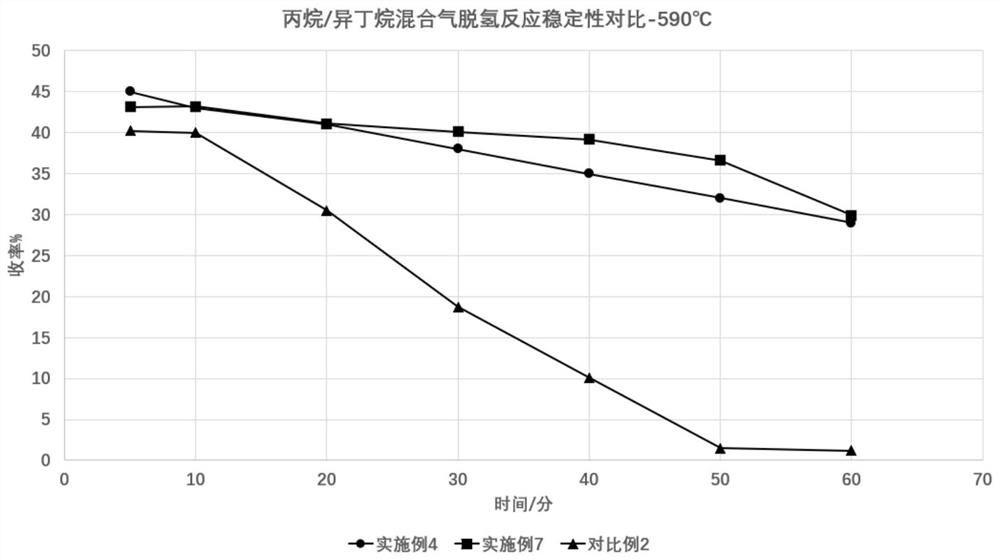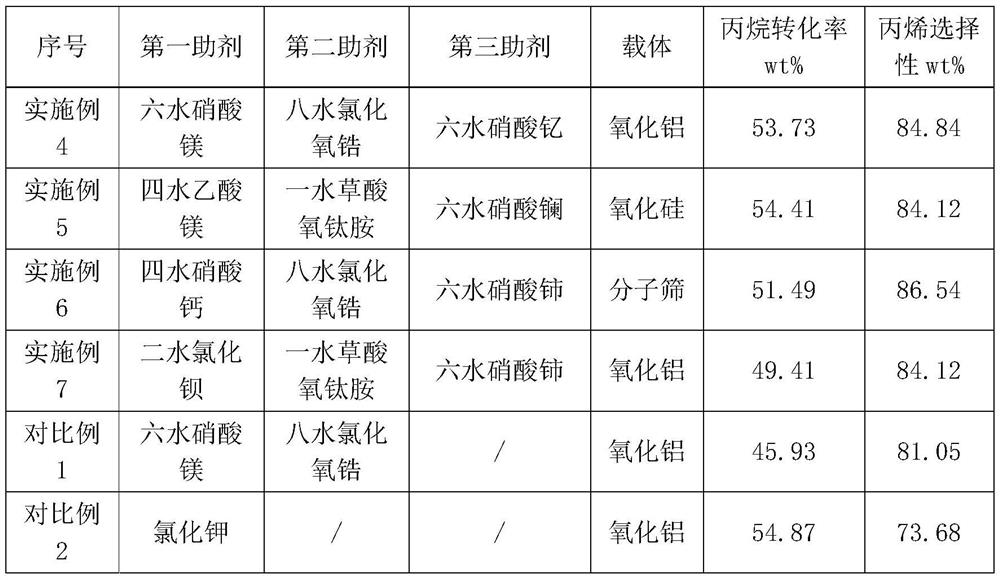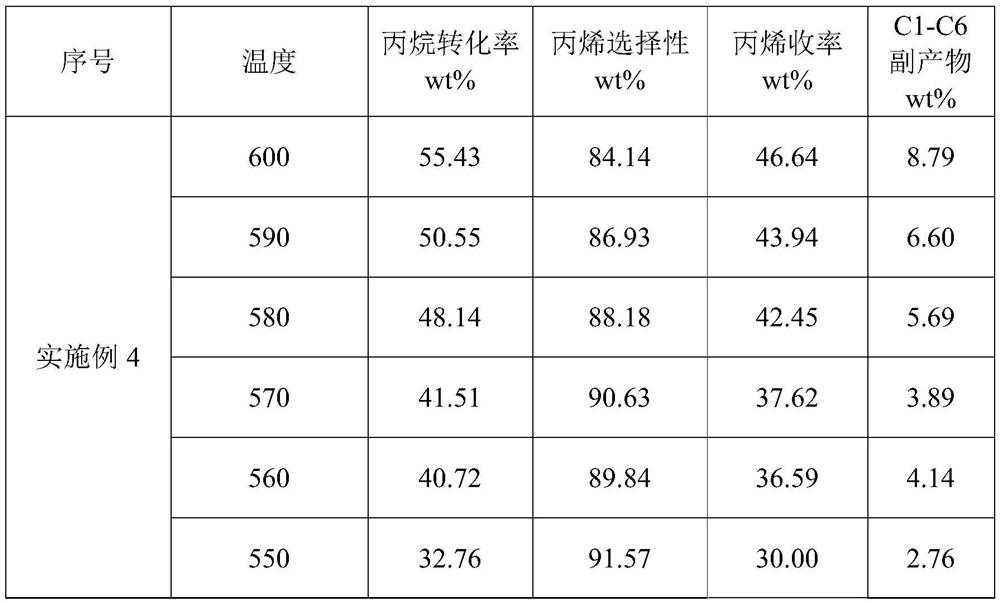Low-carbon alkane chromium dehydrogenation catalyst containing a spinel structure and preparation method thereof
A carbon alkane chromium-based, dehydrogenation catalyst technology, applied in catalyst activation/preparation, carbon compound catalysts, including molecular sieve catalysts, etc., can solve the problems of single use range, low crushing strength, poor stability, etc. Improve stability, enhance the effect of stability
- Summary
- Abstract
- Description
- Claims
- Application Information
AI Technical Summary
Problems solved by technology
Method used
Image
Examples
preparation example Construction
[0050] A preparation method of a fixed-bed carrier containing a low-carbon alkane chromium series dehydrogenation catalyst with a spinel structure, comprising the following steps:
[0051] a) Mix alumina stone powder, silica gel powder or molecular sieve with concentrated nitric acid, sage powder and demineralized water in a mass ratio of 100:5-10:5-10:10-80, extrude strips on a 4.5mm orifice plate, and dry, Obtain a strip-shaped fixed bed carrier;
[0052] b) calcining the strip-shaped fixed-bed carrier at 400-1000° C. for 1-10 hours to obtain a fixed-bed carrier with a specific surface area of 50-500 m2 / g and a pore diameter range of 5-40 nm;
[0053] c) configuring required soluble solutions containing chromium, soluble solutions of alkaline earth metal salts, soluble solutions of Group IVB elements and soluble solutions of rare earth elements, and mixing them into a mixed solution;
[0054] d) Impregnating the fixed bed carrier and the mixed solution under vacuum condit...
Embodiment 1
[0057] Embodiment 1-alumina fixed bed carrier preparation
[0058] Add 100g of basalt powder in the kneader, add 3g of celadonite powder and mix evenly; weigh 2.8g of concentrated nitric acid and add it to 45g of water to configure a nitric acid solution, and add this solution to the mixture of pseudoboehmite and celadonite powder, Knead for 1 hour, and extrude on a 4.5mm orifice plate; dry the extruded strip-shaped fixed-bed carrier at 120°C for 2 hours, cut into pellets, and heat up to 900°C at a rate of 3°C per minute. Roast for 4-8 hours to obtain the fixed bed carrier I; its water absorption is measured to be 40%.
Embodiment 2
[0059] Embodiment 2-Silica fixed bed carrier preparation
[0060] Add 88g of silica gel powder in the kneader, add 3g of kale powder and mix evenly; weigh 2.8g of concentrated nitric acid and add it to 45g of water to form a nitric acid solution, and add this solution to the mixture of pseudoboehmite and kale powder, Knead for 1 hour, and extrude on a 4.5mm orifice plate; dry the extruded strip-shaped fixed-bed carrier at 120°C for 2 hours, cut into pellets, and heat up to 900°C at a rate of 3°C per minute. Roast for 4-8 hours to obtain the fixed bed carrier II; its water absorption is measured to be 40%.
PUM
| Property | Measurement | Unit |
|---|---|---|
| specific surface area | aaaaa | aaaaa |
| pore size | aaaaa | aaaaa |
| water absorption | aaaaa | aaaaa |
Abstract
Description
Claims
Application Information
 Login to View More
Login to View More - R&D
- Intellectual Property
- Life Sciences
- Materials
- Tech Scout
- Unparalleled Data Quality
- Higher Quality Content
- 60% Fewer Hallucinations
Browse by: Latest US Patents, China's latest patents, Technical Efficacy Thesaurus, Application Domain, Technology Topic, Popular Technical Reports.
© 2025 PatSnap. All rights reserved.Legal|Privacy policy|Modern Slavery Act Transparency Statement|Sitemap|About US| Contact US: help@patsnap.com



